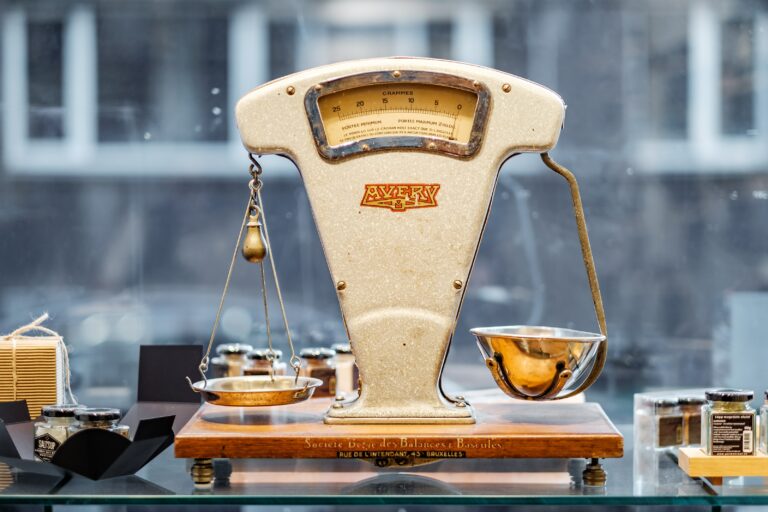The second triangle: the Descending Triangle
Read MoreGolden Ratio in Investment
In Brief: The idea behind the Golden Ratio is to allocate assets in a way that provides the maximum potential for growth, while also minimizing risk. Let’s take a closer look at this strategy.

Golden Ratio: What is it?
The Golden Ratio of Investment is a term used to describe a mathematical principle that is used in investing and financial planning. Essentially, the Golden Ratio is about allocating assets in a way that can maximize the potential for growth, while at the same time being as risk-averse as possible. The key is to find a balance between risk and reward that is optimal, or “golden”.
What is the Golden Ratio in terms of investment?
The Golden Ratio is often represented by the Greek letter phi (Φ) and is approximately equal to 1.6180339887. The Golden Ratio is one of the components of risk management in investing. It can be used to determine how stocks, bonds, and cash should be allocated in a portfolio to ensure a balanced risk/reward ratio. As a general rule, investors should allocate a part of their portfolio to high-risk, high-reward investments, such as stocks, while keeping another part invested in safer, low-risk investments, such as bonds and cash, in order to minimize their exposure to risk.
The specific allocation will depend on an individual’s investment goals, risk tolerance, and investment time horizon. The Golden Ratio, however, can serve as a starting point when deciding how to allocate assets.
It’s important to note that the Golden Ratio of Investment is not a guarantee of success and should not be relied upon solely when making investment decisions. There are also many other factors that should be taken into account when building a well-diversified portfolio of investments, including market conditions, economic indicators, and individual financial circumstances.
Here is how to pick stocks based on the Golden Ratio:

Analysis of financial ratios
The first step is to analyze the financial ratios of the stock and compare it with the golden ratio of 1.6180339887. This includes analyzing the price-to-earnings (P/E) ratio, price-to-book (P/B) ratio, and other relevant financial ratios.
Study of growth potential
The next step is to study the growth potential of the stock and compare it with the golden ratio. This includes analyzing revenue growth, earnings growth, and other relevant growth indicators.
Trend analysis
The third step is to analyze the trend of the stock and compare it with the golden ratio. This includes analyzing the trend in stock price, volume, and other relevant trends.
In investing, trend analysis ratios are used to determine the direction and strength of a trend. It indicates whether a stock is trending upwards or downwards, or whether it is in a range-bound pattern, by comparing the current price of a stock to its moving average. Using trend analysis ratios, you can identify entry points and exit points for investments, and decide when to buy and sell.

The differences of the golden ratio and trend analysis
the golden ratio and trend analysis ratio are both used in investment, but for different purposes. The golden ratio is used to identify price patterns in stocks, while the trend analysis ratio is used to determine the direction and strength of trends in a stock or market.
Technical analysis
The fourth step is to perform a technical analysis of the stock and compare it with the golden ratio. This includes analyzing the trend lines, resistance levels, and support levels.
Incorporating the golden ratio into technical analysis
The golden ratio can be used in both investment and technical analysis. Investing often uses the golden ratio to predict market trends and determine market trends’ price movements. Because traders can identify key levels of support and resistance based on the golden ratio’s mathematical relationship to market cycles.
While in technical analysis, the golden ratio is often used as a tool for determining the strength of trends and chart patterns. It’s because the golden ratio can be used by traders in order to determine the optimal price levels at which to enter and exit trades, as well as to determine the potential direction of price movements. Traders may also use the golden ratio in order to identify trend lines and Fibonacci retracements, both of which are used to help predict the future movements of prices.
To compare the use of the golden ratio in investment and technical analysis, it is important to consider how the golden ratio is applied in each discipline. In investment, the golden ratio is often used as a predictive tool, while in technical analysis it is used as a tool for determining the strength of trends and patterns. Moreover, while the golden ratio may be applied to both investment and technical analysis, the specific methods used in each discipline may differ.
Valuation analysis
The final step is to perform a valuation analysis of the stock and compare it with the golden ratio. This includes analyzing the intrinsic value of the stock, its price-to-fair value ratio, and other relevant valuation indicators.
Known as the Divine Proportion, the Golden Ratio describes the relationship between two quantities in which the ratio of the larger quantity to the smaller quantity equals the sum of the two quantities to the larger quantity. In contrast, valuation analysis is a financial tool used to determine a stock’s intrinsic value.
Using current financial figures and future potential, valuation analysis aims to determine how much a company is worth. Typically, this is done by calculating the present value of expected future cash flows or earnings. Investors use valuation analysis to determine whether a stock is overvalued or undervalued and whether or not to invest.
The differences between the golden ratio and valuation analysis
The main difference between the Golden Ratio and Valuation Analysis is their purpose. Using the Golden Ratio is like creating aesthetically pleasing compositions, whereas using Valuation Analysis is like determining the intrinsic value of an investment. In other words, the golden ratio is a mathematical concept, while Valuation Analysis is a financial tool.
Investors can choose stocks more effectively if they use the golden ratio as a reference point. Nevertheless, it’s important to remember, however, that the golden ratio is just one tool used for stock picking and it shouldn’t be relied upon exclusively.
Golden Ratio implementation in Stock Trading
There are many ways in which the golden ratio can be applied in stock trading, including determining entry and exit points, risk management, and portfolio allocation.

Entry and exit points
Using golden ratios, investors can identify key support and resistance levels for entering and exiting trades. As a result, it is used to predict the direction in which the stock price is likely to reverse.
Risk management
Additionally, it is optimal to determine a stock’s stop-loss and take-profit levels. By using the golden ratio, traders can limit their risk while maximizing their potential profits.
Portfolio allocation
Lastly, it can be used to determine the ideal allocation of funds within a portfolio. In other words, traders can allocate their funds to balance risk and reward.
Bottom Line
It’s important to remember that while the golden ratio can be a useful tool, it’s just one aspect of a successful trading strategy. Traders should always consider other factors such as market trends, technical indicators, and economic data.
The key takeaways/market update is a series by AxeHedge, which serves as an initiative to bring compact and informative In/Visible Talks recaps/takeaways on leading brands and investment events happening around the globe.
Do keep an eye out for our posts by subscribing to our channel and social media.
None of the material above or on our website is to be construed as a solicitation, recommendation or offer to buy or sell any security, financial product or instrument. Investors should carefully consider if the security and/or product is suitable for them in view of their entire investment portfolio. All investing involves risks, including the possible loss of money invested, and past performance does not guarantee future performance.
Trading Dow Pattern the Triangle Pattern (Part 1)
The first triangle: the Ascending Triangle
Read MoreFunds: Equity Funds (Part 3)
How to choose between equity funds based on companies’ earnings...
Read More



